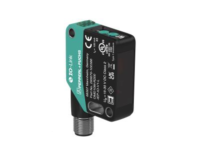
Neonode demonstrated touchless sensing using company’s vertical-cavity surface-emitting laser (VCSEL) technology at Sensors Expo 2019.
Neonode’s zForce (zero force) patented optical sensing technology uses infrared light, invisible to the human eye to provide a holographic touch screen, essentially making air touchable.
The holographic design consists of a screen at the bottom, a mirror that projects the image into the air and the zForce edge-mounted sensor that senses the air image. For medical instruments where touching needs to be avoided, various functions can be controlled through a display that seems to be suspended in mid-air.
The technology starts with a substrate where VCSELs are bonded at the edge and every second unit is a silicon photodiode receiver with a separation of 7 mm between them. Both the VCSELs and receivers are wire bonded and glued to the substrate.
An application-specific integrated circuit (ASIC) drives the laser and receives the signals from the photodiodes, signal conditions them and a state machine sends the results to an M4 STMicroelectronics ARM microcontroller (MCU).
The x and y coordinates are available at the edge connector. An optical lens system with several lenses covers the initial structure. As a result, the lenses can handle a range of different temperature so they do not bend or warp over temperature. The lenses over the lasers flatten the light to control the way it exists the module.
Finally, a metal cover seals out the environment. The resulting projected light field at the connector end of the module is equal to the length of the device. It can reflect light and simple triangulation allows the module to determine what the coordinates are of the reflected object. The high tolerance design approach achieves high accuracy. A USB HID profile makes the module plug and go for Microsoft Android creating a “plug and touch” design approach.



















